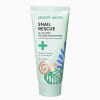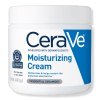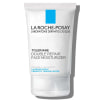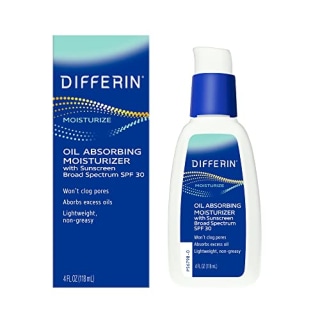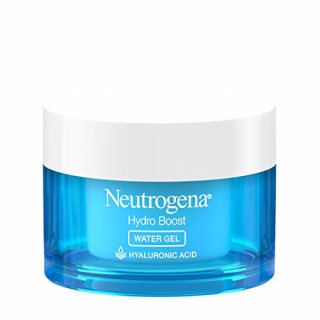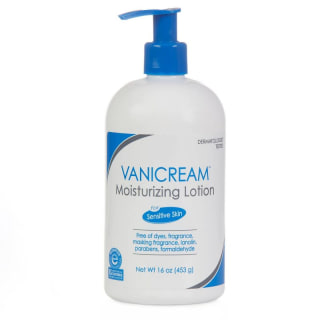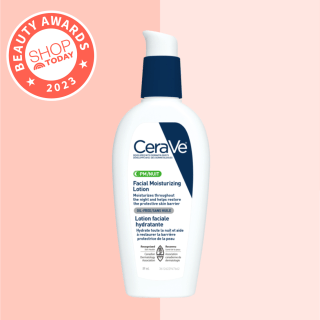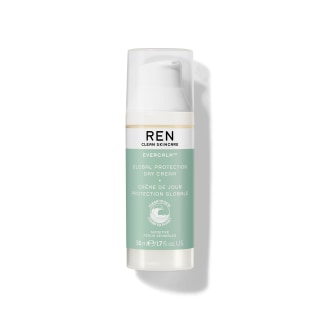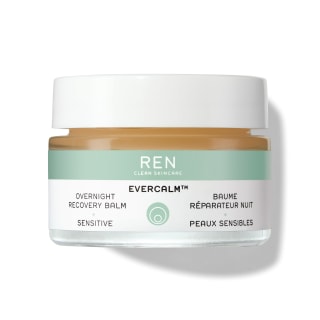Retinol, a synthetic derivative of vitamin A, is often touted as one of the most powerful skin ingredients out there. Although retinol is known to be a skin care wonder that can dramatically prevent and minimize fine lines and wrinkles, brighten skin, reduce breakouts, and fade hyperpigmentation (yay), it can also aggravate it significantly when you first use it (nay).
Trust us, the initial redness and dryness are a small price to pay for the eventual results. Still, you can help minimize the negative effects of retinol by incorporating a top-notch face moisturizer into your retinol routine.
What to look for in moisturizers when using retinol
“In the first two to four weeks, the skin undergoes a process known as retinization, where the skin cells adjust to the retinol itself. This can lead to dryness, flaking and redness. That is why it is so important to pair your retinol with a moisturizer,” says Dr. Joshua Zeichner, board-certified dermatologist and Director of Cosmetic and Clinical research at Mount Sinai Hospital’s department of dermatology.
Of course, every person’s skin is different, and it’s best to consult a dermatologist for personalized recs, but here are some of the common ingredients experts say we should be looking for while shopping for a moisturizer to pair with retinol.
- Niacinamide: This ingredient “helps build cells in the skin while also protecting them from environmental stressors such as sunlight, pollution and toxins. It also plays an important role in soothing and helping to restore the skin barrier,” says Dr. Liia Ramachandra, a former pharma executive and skin care expert.
- Ceramides: Think of these lipids as the glue that holds our skin cells together. “These are the building blocks in the skin and are lacking in those people who have disrupted skin barrier (patients with rosacea, eczema and even acne!),” Dr. Kseniya Kobets, Director of Cosmetic Dermatology at Montefiore Einstein Advanced Care, says. “We now know that the sebum (or oil) produced by acne-prone skin is lacking proper ceramides, and thus we must stop over-drying the skin by stripping it with harsh cleansers and toners, and [we] need to start using products containing ceramides.” This is especially important for acne patients who must use a retinoid, which, while proven to help with oiliness, inflammation and even acne scarring, still needs to be applied to skin that has a proper barrier.
- Hyaluronic acid: Ramachandra also emphasizes this ingredient known to soothe inflammation and help strengthen the skin. She notes, “hyaluronic acid can also be used to plump and hydrate skin.”
- Naturally derived oils: “I would choose naturally derived oils over synthetic ingredients,” says Greenfield. “Retinols make your skin more sensitive, even if you don’t have sensitive skin normally. Because of this, choose ingredients that are gentle yet effective.”
Editor-tried moisturizer to pair with retinol
All about details:Peach Slices Snail Rescue All-in-One Face Moisturizer
- Super lightweight
- Noticably hydrating
- May feel greasy at times
Great for: Skin new to retinol | Size: 2.8 oz. | Key ingredients: Squalane, hyaluronic acid, snail mucin concentrate
“I just started using a retinol serum, and I often use this moisturizer afterwards,” says commerce editor Amanda Fama. “It has super hydrating ingredients like squalane, snail mucin concentrate and hyaluronic acid, so it leaves my complexion feeling super fresh and soft. I usually switch back and forth between this one and the oil-free version which is a bit less greasy feeling,” she explains.
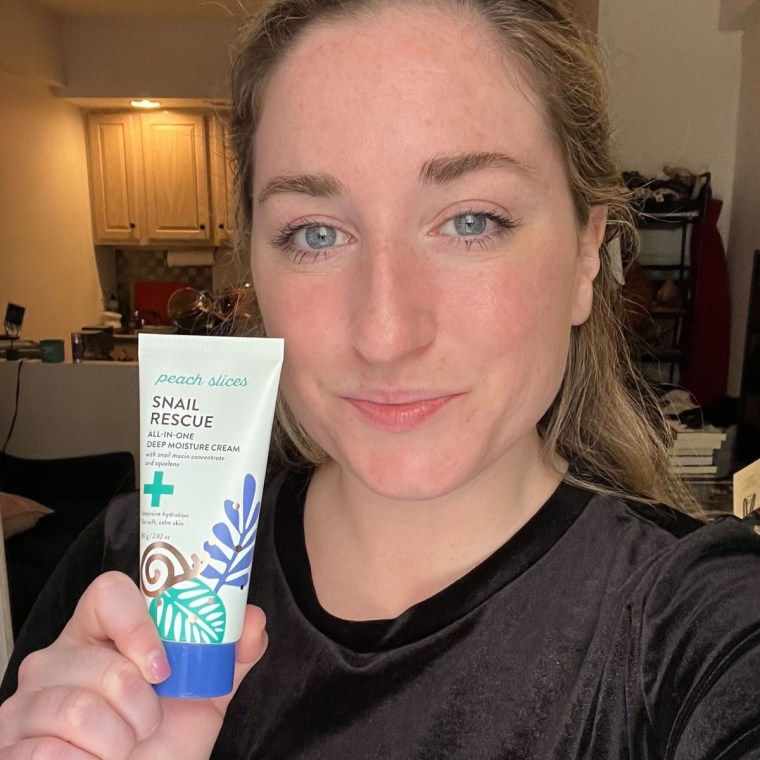
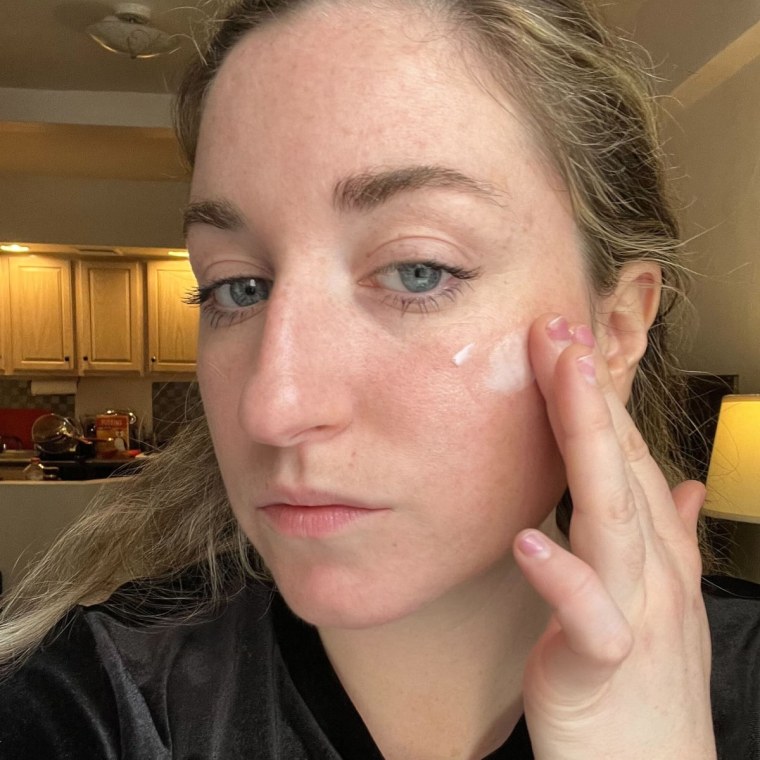
Expert-approved moisturizers to pair with retinol
Sun protection always: Differin Oil-Absorbing Moisturizer with SPF 30
- Lightweight
- Not greasy
- Some users don't like smell
Great for: Combo and oily skin | Size: 4 oz. | Key ingredients: Avobenzone, octisalate, octocrylene
This bestseller has won the hearts of Amazon shoppers (it has 4,600-plus verified five-star ratings!) and it's also earned Board-certified plastic surgeon Dr. Troy Pittman's respect.
"It uses micropearl technology to absorb excess oil and has glycerin, which keeps the skin smooth and soft,” he tells us.
Although it’s not recommended to use retinol during the day, if you happen to for any particular reason, know that this formula contains SPF 30, which is helpful to pair with retinol since it increases your skin’s sensitivity to the sun’s rays.
Pittman also reminds us that it's essential to apply sunscreen throughout the day, and says that this lightweight formula won’t clog pores, making it particularly great for those with combination or oily skin.
A moist solution: Neutrogena Hydro Boost Gel-Cream
- Absorbs quickly
- Easy to apply
- Nice smell
- May not last long
Great for: Extra-dry skin, sensitive skin | Size: 1.7 ounces | Key ingredients: Glycerin
Pittman lists glycerin and hyaluronic acid as the two powerhouse ingredients in this Neutrogena gel cream, saying it has a number of great benefits for your complexion.
“It has no fragrance, is dye-free and restores the skin’s natural barrier against moisture loss. This moisturizer quenches extra-dry skin, relieves intense dryness and leaves the skin looking smooth, which is excellent for those using retinol,” he says.
Many verified Amazon shoppers agree, and more than 3,500 of them gave it a five-star rating. One user noted, “Love this moisturizer, especially for the price. I’m currently using a topical retinoid, which can really dry out the skin. This has been my saving grace.”
Simplicity is best: Vanicream Moisturizing Lotion
- Absorbs quickly
- Smooth on skin
- May be thick
Great for: Sensitive skin prone to eczema, psoriasis or rosacea | Size: 16 oz. | Key ingredients: Petrolatum, propylene glycol
Prefer a more streamlined ingredient list? Boston-based, board-certified dermatologist Dr. Ranella Hirsch loves the fact that this lotion is free of dyes and fragrances. “It makes it a great, light option for even sensitive skin types trying to get started on a retinol,” she said.
It also helps soothe red, irritated, cracking or itchy skin. The bestseller also happens to be quite popular with Amazon shoppers, who’ve given it over 8,600 verified five-star ratings.
Creamy sensation: CeraVe Moisturizing Cream
- Not greasy
- Gentle on skin
- May not absorb well
Great for: Skin new to retinol, sensitive skin, extremely dry skin | Size: 16 oz. | Key ingredients: Glycerin
“Retinols function by revving up cell turnover. This can — and frequently does — yield some level of irritation and/or dryness,” Hirsch explains, adding, “Judicious use of a good moisturizer can help counter this for a beginning user or even someone who has been using it for a long time.”
The derm is a fan of this gentle, noncomedogenic moisturizer that works for all skin types.
“It offers long-term hydration with ceramides and glycerin,” she shares. Add it to your routine after retinol and let the formula do its job — it’ll provide 24 hours of hydration thanks to key ingredients like ceramides and hyaluronic acid.
Night routine: CeraVe PM Facial Moisturizing Lotion
- Not greasy
- Absorbs quickly
- Some users dislike smell
Great for: Combo and sensitive skin | Size: 3 oz. | Key ingredients: Glycerin, niacinamide
“CeraVe PM Moisturizing Lotion is my other favorite, as it is also great for all skin types,” says Kobets.
This Shop TODAY Beauty Award winner contains hyaluronic acid, glycerin, niacinamide and ceramides — these ingredients lock in moisture but don't feel greasy on the skin. Although it says PM, you can use it in the AM as well, the dermatologist notes.
One Beauty Awards product tester noted, “I love how much it actually moisturizes, since it feels pretty light. And I like the pump, it’s easy to get out with one hand, rather than other most expensive moisturizers that you have to scoop. It makes it easier for me to use every night since it doesn’t feel like such a hassle or a process. (I also have used it in the morning sometimes because it’s convenient!)”
Full repair: La Roche-Posay Toleriane Double Repair Face Moisturizer
- Not greasy
- Absorbs quickly
- May feel heavy
Great for: Sensitive, easily irritated skin | Size: 3.8 ounces | Key ingredients: Glycerin
Give your skin a double dose of hydration with this moisturizer. The main ingredients? La Roche-Posay’s prebiotic thermal water (a soothing antioxidant), ceramide 3 (a skin-identical lipid that helps retain moisture) and niacinamide (a water-soluble vitamin to soothe and restore skin).
After just one hour, it repairs the skin’s protective barrier and keeps it hydrated for 48 hours — yep, that’s two full days. It’s also fragrance-free and made with sensitive-skin types in mind. So, especially if you’re new to the retinol game, this hydration-heavy formula will help counteract irritation so you can put your best face forward.
Kobets notes, “I advise my patients to avoid the UV-containing version (they look very similar, so be careful), since it is a chemical blocker and can cause skin sensitivity. Plus, since most retinoids are used at bedtime, we do not need one with SPF.”
She adds, “It also comes in a matte version, which is great for patients who do not want to worsen their oiliness.”
Oat is the key: Aveeno Calm and Restore Oat Gel Moisturizer
- Lightweight
- Doesn't make skin oily
- May cause redness
Great for: Sensitive skin | Size: 1.7 ounces | Key ingredients: Glycerin
Don't be surprised if your skin rebels a bit when you first start using retinol.
"Especially early on, retinoids cause an exfoliation of the keratinocytes, and that can disrupt the lipid barrier," board-certified dermatologist Dr. Mary Lupo shares, adding, "It is worse in very dry climates and during the first few weeks of use."
The skin care expert recommends using a soothing moisturizer to combat those initial growing pains and named this Aveeno oat gel moisturizer one of her top picks.
"It's a great choice as a hydrating gel in humid climates and for acne-prone skin," she says.
Cool absorption: REN Clean Skincare Evercalm Barrier Support Moisturizer
- Not greasy
- Makes skin soft
- Lightweight
- Mixed reviews on smell
Great for: Sensitive skin, acne-prone skin | Size: 1.7 ounces | Key ingredients: Blackcurrant seed oil, sea buckthorn oil
This moisturizer by REN Clean Skincare is formulated with sensitive skin in mind: It uses hydrating natural ingredients like black currant seed oil, sea buckthorn oil and camellia oil, which together add back to the skin the moisturizing factors that retinol may have stripped away.
This ingredient combination, when used with retinol or retinoid products, will make those products more tolerable on the skin so you can use them more consistently, says Dr. Nava Greenfield, a board-certified dermatologist at Schweiger Dermatology Group in New York.
One Sephora reviewer can attest to how well this pairs with retinol: "I have sensitive skin now due to using retinol daily, and it’s a challenge to find a moisturizer that plays nice. ... It absorbed nicely on the first try. The icing on the cake is that it worked well under foundation — what a relief! ... The pump is great, and I do love the consistency of the product too."
Light as water: Dermalogica Calm Water Gel
- Very moisturizing
- Not greasy
- Pleasant smell
- May have to reapply
Great for: Sensitive, oily or combination skin | Size: 1.7 ounces | Key ingredients: Glycerin
Parks notes this lightweight gel as a great nighttime moisturizer option.
"It locks in moisture and protects the moisture barrier. It uses a strong combination of aloe, hyaluronic acid, glycerin and other natural extracts to gently but effectively hydrate the skin and protect it from damage," he says.
One Ulta user raved, “This moisturizer is my holy grail product. It's the perfect calming moisturizer for during the day and layers very well with other products. Perfect to soothe the skin! 10/10.”
Calm sensation: REN Clean Skincare Evercalm Overnight Recovery Balm
- Easy to apply
- Makes skin feel smooth
- May be oily
Great for: Very dry or easily irritated skin | Size: 1 ounce | Key ingredients: Jojoba, sunflower oil complex
If you’re looking for an extra dose of hydration, count on this balm to do the trick.
Recommended by Greenfield, this night treatment “has olive, almond, borage and linseed oils combined in a thicker formulation that acts as an occlusive, locking in the skin's hydration so that the skin has the ability to heal itself after a retinol dehydrates [it].”
One Sephora user who calls this balm the "perfect night cream" raved, "I bought this after irritating my skin with a heavy-handed use of PM retinol treatments. It has a consistency similar to Vaseline but becomes much lighter once you warm it in your hands prior to applying. After using this for two nights, I woke with the irritation gone and my skin is soft, smooth and even-toned. I'll be using this as the final step in my PM routine from now on."
Skin splurge: PCA Skin ReBalance
- Lightweight
- Very hydrating
- Pricey
Great for: Chemically treated skin, stressed skin | Size: 1.7 ounces | Key ingredients: Glycereth-26, butylene glycol
Ever wonder why your skin gets so dry while using a retinol?
Parks breaks it down for us: "Retinol increases the rate that your cells turn over themselves exponentially, producing the anti-aging effects you know and love. This means that your skin gets rid of its old skin layers faster than usual, which can cause a significant amount of dryness and flaking."
The derm swears by this lightweight cream that works equally well for all skin types, even oily ones.
"If you have oily skin, adding that moisture back into your skin is important and can actually help regulate oil production in your skin," he says.
This cream is light yet nourishing, with ingredients like antioxidants, vitamin B5 and niacinamide.
What’s the difference between retinol creams and retinol serums?
But first things first: How are retinol serums different from retinol creams?
Kobets tells us, “The terms ‘serums’ and ‘creams’ are often used interchangeably, and their consistency often depends on the brand that you buy. Some serums are like lotions and others are waterier, others more oily.”
Either way you go, know that pairing a moisturizer with your retinol treatment is still essential in your routine (more on the order of application in our FAQs section below).
If you have sensitive skin, it’s imperative that your skin barrier is reinforced or repaired before using a topical retinoid, which can irritate the skin, says Kobets. “Once the skin barrier dysfunction has been fixed and maintained, we can start adding topical retinoids (from over-the-counter to prescriptions),” she adds.
How we chose the best moisturizers to use with retinol
In a sea of moisturizer options out there, how did Shop TODAY narrow it down?
First, we looked to our trustworthy sources: dermatologists and skin care experts who gave us their take on effective products. We then took into consideration their notes on which specific ingredients to look for.
Meet the experts
- Dr. Joshua Zeichner, MD, FAAD, is a board-certified dermatologist and Director of Cosmetic and Clinical Research at Mount Sinai Hospital’s Department of Dermatology in New York City. He has expertise in cosmeceuticals, cosmetic dermatology, and treatments for acne, rosacea and more. Zeichner is also the medical advisor for Jori Skincare.
- Dr. Liia Ramachandra, Pharm.D., Ph.D, is a former pharma executive and skin care expert based in Canoga Park, California. She is the CEO and founder of skin care brand Epilynx.
- Dr. Kseniya Kobets, MD, MHS, FAAD, is Director of Cosmetic Dermatology at Montefiore Einstein Advanced Care in Westchester, New York. She specializes in treatments for acne, acne scarring, rosacea, hair restoration and more.
- Dr. Troy Pittman, MD, FACS, is a board-certified aesthetic plastic surgeon based in Washington, D.C. He offers the full spectrum of plastic surgery procedures and is internationally recognized for his expertise in the aesthetic and reconstructive surgery of the breast and body.
- Dr. Ranella Hirsch, MD, FAAD, is a board-certified dermatologist based in Boston. She has expertise in cosmetic and laser dermatology and serves on the boards of several dermatology journals, including Dermatology Times, Cosmetic Dermatology, The Dermatologist and Cutis.
- Dr. Mary P. Lupo, MD, is a board-certified dermatologist and clinical professor of dermatology at Tulane University School of Medicine. She practices in New Orleans, Louisiana.
- Dr. Alan Parks, MD, is a board-certified dermatologist and founder of DermWarehouse, as well as Eastside Dermatology & Skin Care Center in Columbus, Ohio. He focuses on cosmetic and surgical dermatology, laser treatments, Botox cosmetic services, and skin cancer surgery.
- Dr. Nava Greenfield, MD, is a board-certified dermatologist at Schweiger Dermatology Group in New York. She also works with REN Clean Skincare as a third-party expert. Greenfield is a member of the American Academy of Dermatology and has been published in several medical journals, such as The Journal of Dermatological Treatment and the Journal of Women’s Dermatology and Pediatrics.
- Our top picks
- What to look for in moisturizers when using retinol
- Editor-tried moisturizer to pair with retinol
- Expert-approved moisturizers to pair with retinol
- What’s the difference between retinol creams and retinol serums?
- Frequently asked questions
- How we chose the best moisturizers to use with retinol
- Meet the experts

